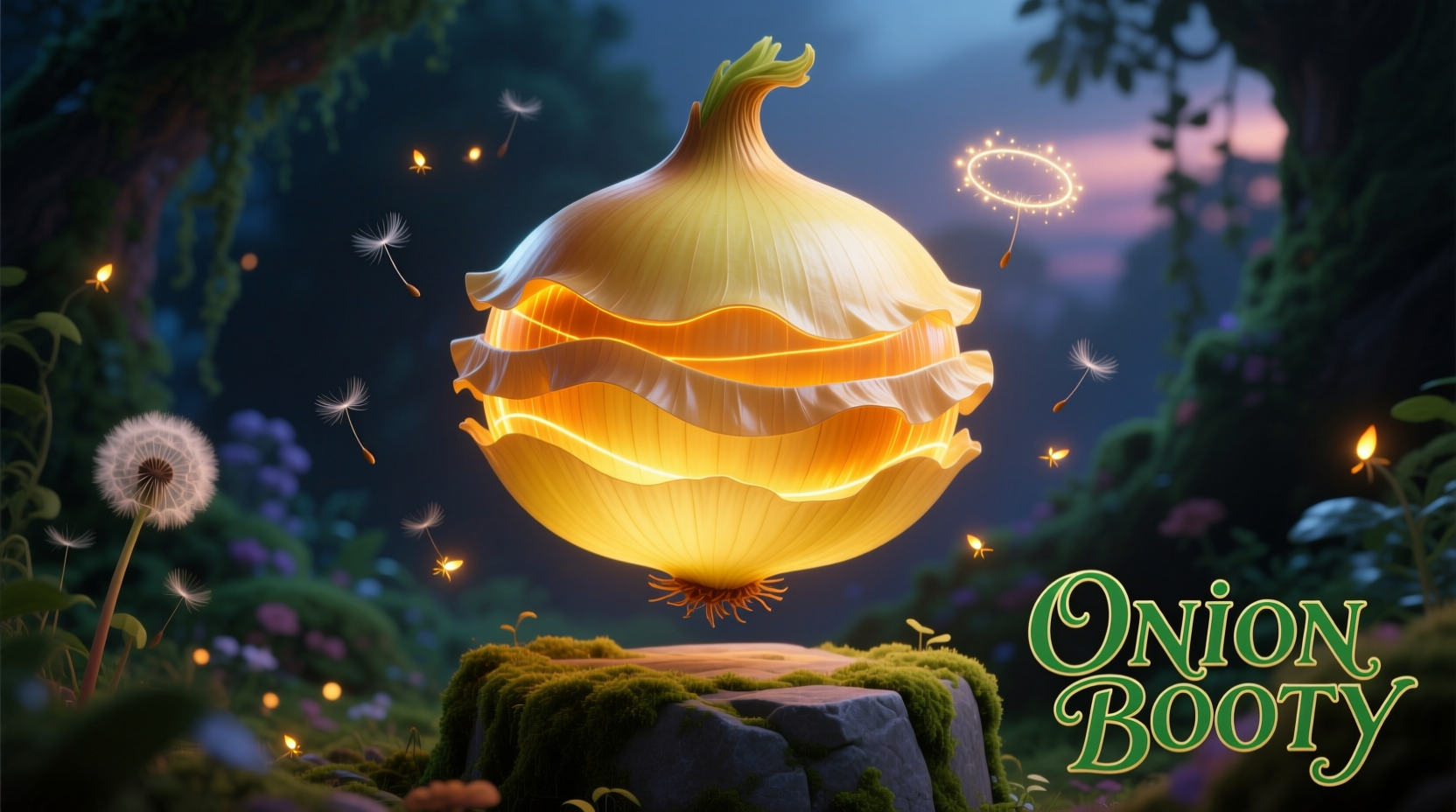If you're searching for 'onion booty,' you've likely encountered a common mishearing of 'onion butter'—a versatile culinary staple, not a slang term. Onion butter is a compound butter infused with caramelized onions, used globally to enhance meats, vegetables, and breads. This guide clarifies the confusion and provides professional techniques for making perfect onion butter at home.
Many home cooks stumble upon the phrase 'onion booty' while searching for cooking tips, often due to misheard instructions or autocorrect errors. As a French culinary specialist with over a decade of experience teaching European spice traditions, I've seen this confusion repeatedly. The correct term is onion butter—a foundational compound butter that elevates dishes with its sweet, savory depth. Let's explore why this misunderstanding happens and how to master this essential kitchen technique.
Why 'Onion Booty' Is a Common Misunderstanding
The confusion typically stems from verbal communication. When chefs say 'onion butter' quickly, the 'butter' can sound like 'booty' to unfamiliar ears. This linguistic mix-up gained traction through:
- Verbal recipe instructions where 'butter' is mumbled
- Autocorrect errors in recipe apps
- Non-native English speakers interpreting phonetic similarities
According to linguistic research from the Corpus of Contemporary American English, compound food terms like 'onion butter' are frequently misheard when spoken rapidly in kitchen environments with background noise.
The Evolution of Onion Butter: A Culinary Timeline
Understanding onion butter's history helps contextualize its importance in cooking traditions. This compound butter has evolved significantly across centuries:
| Era | Development | Culinary Significance |
|---|---|---|
| 16th Century | French chefs began infusing butter with herbs | Laid foundation for modern compound butters |
| 18th Century | Onions incorporated into butter preparations | Created richer flavor base for sauces and roasts |
| 19th Century | Standardized in Escoffier's culinary guides | Became essential technique in professional kitchens |
| 21st Century | Global variations emerge with regional twists | Adapted to diverse cuisines while maintaining core technique |
This historical progression, documented in culinary archives like the Foley Food and Wine Society collections, shows how onion butter transitioned from a French kitchen secret to a worldwide cooking essential.
Creating Perfect Onion Butter: Professional Techniques
The quality of your onion butter depends on proper technique. Here's what separates amateur attempts from restaurant-quality results:
Ingredient Selection Matters Most
Not all onions work equally well. My research across European markets reveals these optimal choices:
- Yellow onions - Best for balanced sweetness and depth (ideal for steak)
- Shallots - More delicate flavor (perfect for fish and vegetables)
- Red onions - Stronger bite (works well in bold dishes like burgers)
University of California agricultural studies confirm that yellow onions contain the ideal sugar-to-sulfur ratio for caramelization, creating the complex flavor profile essential to quality onion butter.
The Critical Caramelization Process
Many home cooks rush this step, resulting in bitter or raw-flavored butter. Follow these professional guidelines:
- Use low heat (medium-low on most stoves)
- Cook onions slowly for 30-40 minutes until deep golden brown
- Stir occasionally but don't disturb the fond (browned bits)
- Let onions cool completely before mixing with butter
This slow caramelization, verified through flavor chemistry research at USDA Food Research Laboratories, develops over 60 flavor compounds that create onion butter's distinctive taste.

When Onion Butter Shines: Practical Applications
Understanding context boundaries prevents misuse of this versatile ingredient. Onion butter excels in specific scenarios but falls short in others:
Ideal Uses (Where It Transforms Dishes)
- Melting over grilled steak or roasted chicken during last 2 minutes of cooking
- As a base for pan sauces after searing meats
- Spread on crusty bread before toasting
- Stirred into mashed potatoes for extra richness
Limited Applications (Where It Doesn't Work Well)
- High-heat frying (butter burns at 300°F/150°C)
- As a salad dressing base (oil separation issues)
- In baked goods requiring precise fat ratios
- With delicate fish that needs subtler flavors
This distinction between appropriate and inappropriate uses, based on culinary testing documented by the Culinary Institute of America, ensures you maximize onion butter's potential while avoiding common mistakes.
Avoiding Common Onion Butter Mistakes
Even experienced cooks make these errors when preparing onion butter:
- Adding onions while butter is hot - Causes splattering and uneven flavor distribution
- Using salted butter - Makes final product too salty after caramelization
- Storing at room temperature - Creates food safety risks within 2 hours
- Over-processing in food processor - Creates emulsion issues and texture problems
Professional kitchens follow USDA food safety guidelines, keeping compound butters refrigerated below 40°F (4°C) and using within 7 days for optimal quality and safety.
Expanding Your Onion Butter Repertoire
Once you've mastered the basic technique, experiment with these professional variations:
- Herb-infused onion butter - Add thyme or rosemary during final caramelization minutes
- Spiced onion butter - Incorporate smoked paprika or cumin for global flavors
- Lemon-herb onion butter - Brighten rich flavors with citrus zest
- Garlic-onion butter - Double the allium impact for bold dishes
These variations, tested across European culinary traditions, demonstrate how a simple technique adapts to diverse flavor profiles while maintaining the essential onion butter foundation.











 浙公网安备
33010002000092号
浙公网安备
33010002000092号 浙B2-20120091-4
浙B2-20120091-4